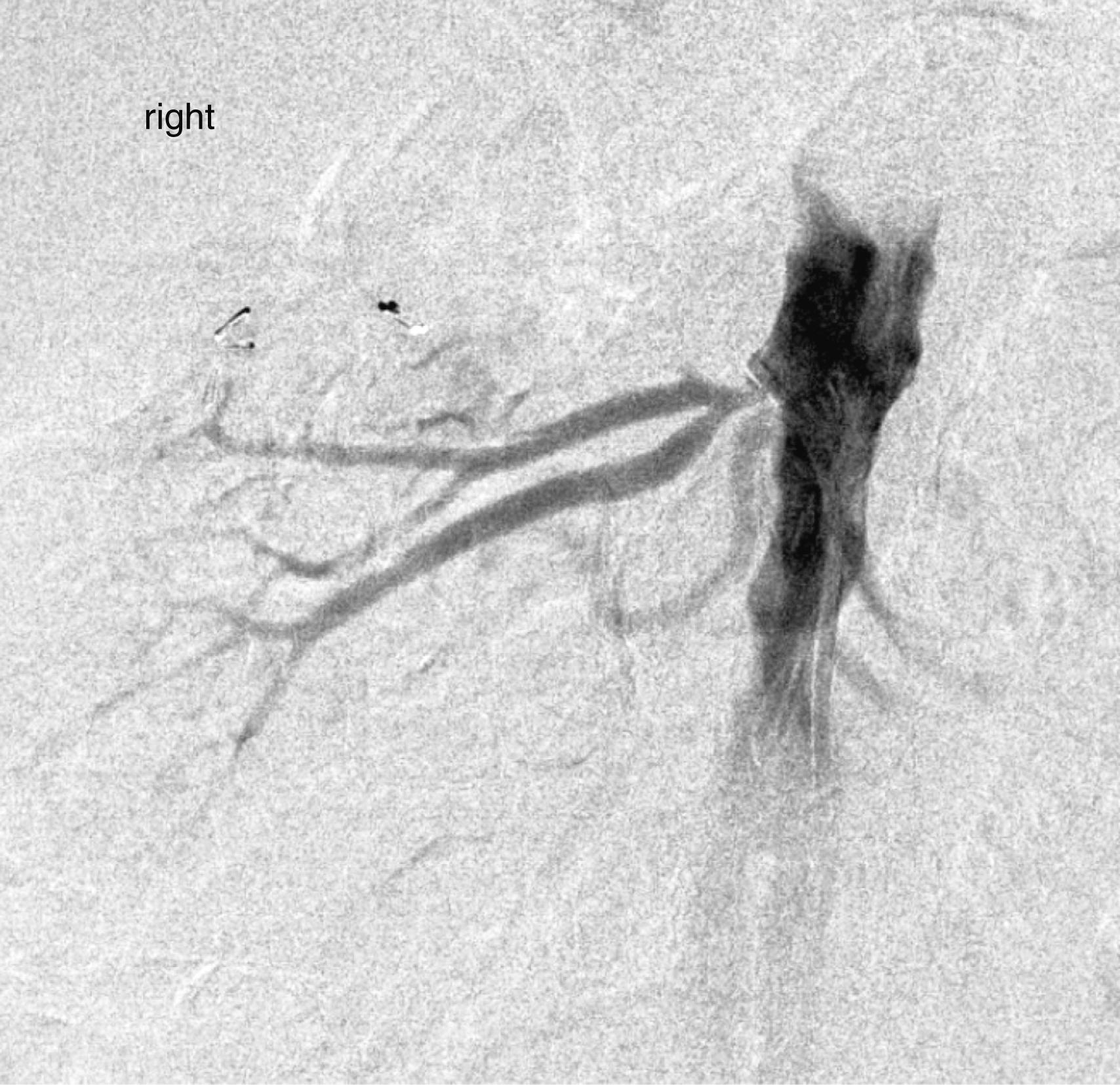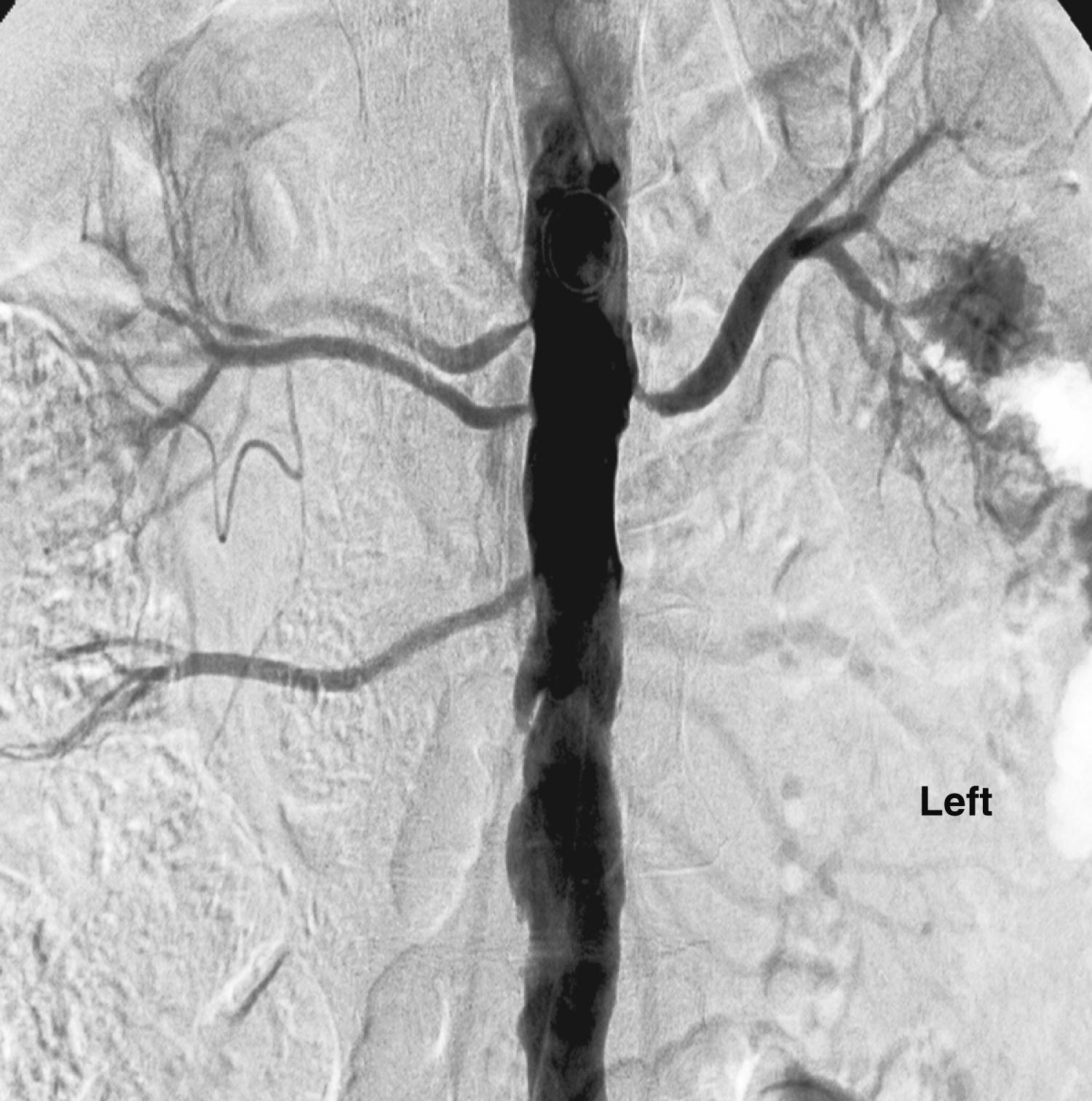Physical Address
304 North Cardinal St.
Dorchester Center, MA 02124
The endovascular treatment of renovascular disease remains controversial. Despite several adequately powered randomized trials, there is no current evidence to support the broad use and efficacy of renal artery stenting. However, renal revascularization remains a commonly used treatment option for selected patients who have clearly failed adequate medical therapy. Endovascular techniques offer the benefits of decreased morbidity, mortality, patient recovery time, and hospital resource utilization compared with conventional open surgical revascularization. This chapter provides an overview of the technical aspects involved in the performance of endovascular renal revascularization as well as current data concerning the technical results, clinical outcomes, and associated complications.
The indications for renal artery revascularization are controversial in light of the absence of level I data demonstrating the efficacy of such therapy in improving adverse event-free survival in patients with renovascular disease. Early data in the late 1990s, from the Dutch Renal Artery Stenosis Intervention Cooperative Study Group trial (DRASTRIC) compared renal artery angioplasty to medical therapy in a small cohort of patients. No significant improvement in hypertension was shown with angioplasty, but the study was flawed with a significant patient cross-over. In the late 2000s, two clinical trials conducted in Europe, the Angioplasty and Stenting for Renal Artery Lesions (ASTRAL) trial and the stent placement and blood pressure and lipid-lowering for the prevention of progression of renal dysfunction caused by Atherosclerotic Ostial Stenosis of the Renal Artery (STAR) trial, followed in 2014 by the North American Cardiovascular Outcomes in Renal Atherosclerotic Lesions (CORAL) trial demonstrated no evidence to support the widespread application of renal stents to patients with renovascular hypertension or ischemic nephropathy. However, both of the European trials have been criticized for methodologic shortcomings that limit the generalizability of their results and conclusions. Those limitations aside, the data presented in ASTRAL strongly suggest that the application of renal revascularization therapy to patients without strong clinical indications (i.e., prophylactic or “drive by” revascularization) lacks demonstrable benefit for the patient.
The results from the CORAL trial, which was more scientifically rigorous and robust, also demonstrate no clinical benefit for the widespread application of revascularization to patients with renal artery stenosis and significant hypertension with or without associated renal dysfunction. Furthermore, no interactions were observed for bilateral renal stenosis, degree of stenosis, or other clinical factors in terms of clinical benefit. Subsequent secondary analyses of the CORAL data and other reports have directly examined the prognostic value of trans-lesion pressure gradients, baseline blood pressure, urine albumin to creatinine ratio, stenosis severity, and fractional flow reserve; no evidence of prognostic value for these parameters was observed. Despite the existing evidence, practice guidelines and consensus statements formed in conjunction with several societies help delineate recommendations for intervention in patients not representative of the CORAL study population. In general, those documents recommend renal revascularization based upon the presence of hemodynamically significant renal stenosis in the setting of severe, difficult-to-control hypertension with or without associated renal dysfunction or in instances of hypertension-associated cardiac disturbance syndrome.
Hypertensive indications and manifestations of renovascular disease include a spectrum of clinical presentations, such as chronic, severe hypertension that is refractory to pharmacologic management; renovascular hypertension associated with cardiovascular disturbance; and more acute hypertensive emergencies, which refer to acute blood pressure elevations associated with target organ damage, including flash pulmonary edema, hypertensive encephalopathy, myocardial infarction, and acute renal failure. Given the findings of ASTRAL and CORAL, which demonstrated no reduction in adverse cardiovascular or renal events despite significant blood pressure decreases after RA-PTAS, as well as other large case series demonstrating a lack of survival benefit in association with blood pressure improvement alone, , , , , many authorities on renovascular disease are advocating the application of renal revascularization only to cases of truly refractory hypertension and those cases of hypertension complicated by defined end-organ effects. , ,
Renal dysfunction in patients with hemodynamically significant atherosclerotic renovascular disease is commonly referred to as ischemic nephropathy, , although definitive establishment of a causal relationship between anatomic renovascular disease and renal dysfunction can be challenging in an individual patient despite extensive diagnostic testing. Conditions that would support a causative relationship between anatomically defined renal artery stenosis and disease manifestations are primarily based on reported predictors of response to intervention. Predictors include a significant observed decline in renal function over a short period of time and the presence of anatomic disease affecting perfusion to the entirety of the functioning renal mass (i.e., bilateral renovascular disease or renovascular disease affecting a solitary kidney). , However, a causative relationship can be proved only by a physiologic response after revascularization. Available data from numerous authors indicate that documented improvement in renal function after renal revascularization is the most important predictor of clinical benefit, suggesting that renovascular disease associated with renal dysfunction may represent the most appropriate contemporary indication for RA-PTAS. , ,
Contraindications to the treatment of renovascular disease by endovascular means can be broadly classified into anatomic reasons, cases in which open revascularization is optimal, and prophylactic treatment. Anatomic contraindications involve situations in which the disease exists in renal arteries not easily treated with currently available endovascular devices or, more commonly, those arteries unable to be treated with any reasonable expectation of durable result. Renovascular disease extending into the terminal portion of a main renal artery or involving the branches and disease involving a very short main renal artery represent instances in which treatment with currently available technology may be problematic ( Fig. 129.1 ). Renovascular disease existing in the branch arteries beyond the main bifurcation, lesions in multiple small renal arteries ( Fig. 129.2 ), and lesions in children (most commonly hypoplastic lesions) are poor candidates for endovascular treatment because of durability concerns. When encountered, these situations are likely best treated with open surgical revascularization unless the patient represents a prohibitive surgical risk. Surgical revascularization should also be considered in patients with indications for renal revascularization who require open aortic surgery for other reasons, such as aneurysm repair.


With regard to prophylactic revascularization, the high rate of technical success and low incidence of periprocedural complications associated with endovascular renal artery revascularization have led to aggressive application of this technique. There is currently no evidence supporting prophylactic renal revascularization (i.e., endovascular treatment of renal artery stenosis in patients with normal renal function and hypertension that is well controlled with conventional medical therapy). Furthermore, the results of ASTRAL, the conduct of which approximated prophylactic treatment in a large percentage of its participants, confirmed the lack of efficacy for such an approach in terms of blood pressure control, protection of renal function, reduction of cardiac events, or improved survival.
The natural history of atherosclerotic renal artery stenosis is associated with anatomic progression in only 10% to 30% of patients and progression to occlusion in 0% to 7%. When anatomic disease progression does occur, it is not consistently correlated with increases in blood pressure or serum creatinine concentration. Considering the benign clinical course of asymptomatic renal artery stenosis in the majority of patients together with the risk of procedure-associated deterioration in renal function with intervention and the recent results from the CORAL trial, we support a nonoperative, noninterventional management strategy for asymptomatic patients with anatomic renovascular disease, normal or well-controlled blood pressure, and normal renal function.
Criteria for procedural technical success include reduction in stenosis as assessed by completion angiography and, when endoluminal stenting has been performed, complete coverage of the stenotic lesion by the deployed stent. Postintervention residual stenosis of less than 30% has been suggested as a threshold for technical success versus failure. When contrast angiography demonstrates anatomically successful treatment of the stenotic lesion, these findings should be further confirmed with transduced pressure measurement immediately proximal and distal to the treated lesion. We consider a persistent systolic pressure gradient of 10 mm Hg or more to be suggestive of inadequate treatment and will repeat angioplasty in this setting in the absence of a significant residual stenosis on the completion angiogram.
Whereas technical success implies delivery of the intended treatment with satisfactory anatomic and hemodynamic results, determination of whether patient benefit has been derived requires consideration of the indications for intervention and the clinical responses observed. Approaches to the assessment of hypertension response have evaluated systolic, diastolic, and mean blood pressure and number of antihypertensive medications (both as continuous outcome measures and in a categorical fashion) using a combination of blood pressure and medication criteria. The categorical definitions generally describe hypertension responses as cured, improved, or failed. Serum creatinine, cystatin C, estimated glomerular filtration rate (eGFR), and renal length and volume all represent continuous outcome measures indicative of renal function response to intervention. Categorization of renal response based on these measures has generally been determined as improved, unchanged, or worsened on the basis of postintervention change within a predefined range. We have generally used an increase or decrease of 20% or more in eGFR to define improvement or worsening in renal function, respectively, with all other patients categorized as unchanged. Alternative analytic approaches have evaluated the impact of renal revascularization on the rate of decline in renal function, defining worsened or unchanged rates of eGFR decline as failure and attributing procedure-related benefit to patients experiencing improvement, stabilization, or slowed rate of decline in eGFR.
Unfortunately, none of the previously discussed parameters assesses the impact of intervention on patient morbidity or survival. Survival free from dialysis, renal death, or cardiovascular morbidity represents an outcome that provides the most direct means of assessing the true benefit of intervention and likely represents the outcome of greatest importance in measuring the true value of renal revascularization to the patient.
A large body of literature exists reporting results of RA-PTAS in adult patients. , , , , , Technical success rates ranged from 88% to 100% and periprocedural 30-day mortality was 0% to 5%. Procedure-related complications associated with RA-PTAS occurred in 0% to 43% of patients. In general, these early results mirror those of ASTRAL and STAR. , In CORAL, technical success rates exceeded 95%, with no early patient deaths. Procedural complications were rare (less than 5% of cases) with the most common being dissection of the treated artery.
Late outcomes associated with endovascular renal artery intervention may be considered in terms of hypertension control, renal function change, anatomic durability, and survival free of dialysis or cardiovascular morbidity. From an anatomic perspective, primary patency of renal stenting has been described to be as high as 80% at 5 years.
Become a Clinical Tree membership for Full access and enjoy Unlimited articles
If you are a member. Log in here